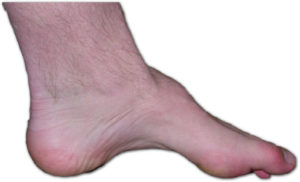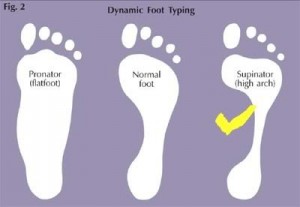… Your shoes don’t fit because their material rubs mercilessly on a bump on the top of your foot. Pes cavas, or high arches, is the result of a spatial problem that occurs when the bones of the foot are drawn too close to one another. Tight ligaments, muscles and fascia can all combine to bind the bones of the foot too tightly together.
There are twenty six bones in the feet with thirty three different articulations. The bones form three arches that work interdependently to bear weight from the bones that stack above the feet— an inner arch, an outer arch and a transverse arch that spans the middle if the foot. The arches of the feet are designed to drop and lift with each step, springing us forward constantly.
The arches of the feet are formed upon the demand of the lower leg muscles. If they lack tone you might have flat feet and if they are too tight they can pull the arch up high. When the muscles of the calf and shin are way too tight the pull can draw the toes into the appearance of a claw. At the least people with high arches will have difficulty getting the feet to ground towards the inner foot.
In a normal arch the distance between the heel and the toes allows for a great deal of movement within the foot and plenty of space for the spring action to occur. Flat feet, which are much more common than high arches, lack the tone needed for the arch to work successfully but the truth is, in my experience, it is easier to build up the arches of a flat foot than it is to release the tension that is creating the high arch.
Over the next few days I’ll post some foot exercises to help with assorted issues but for today we will repeat an exercise that never gets old—Tennis Ball Under Foot.
***


